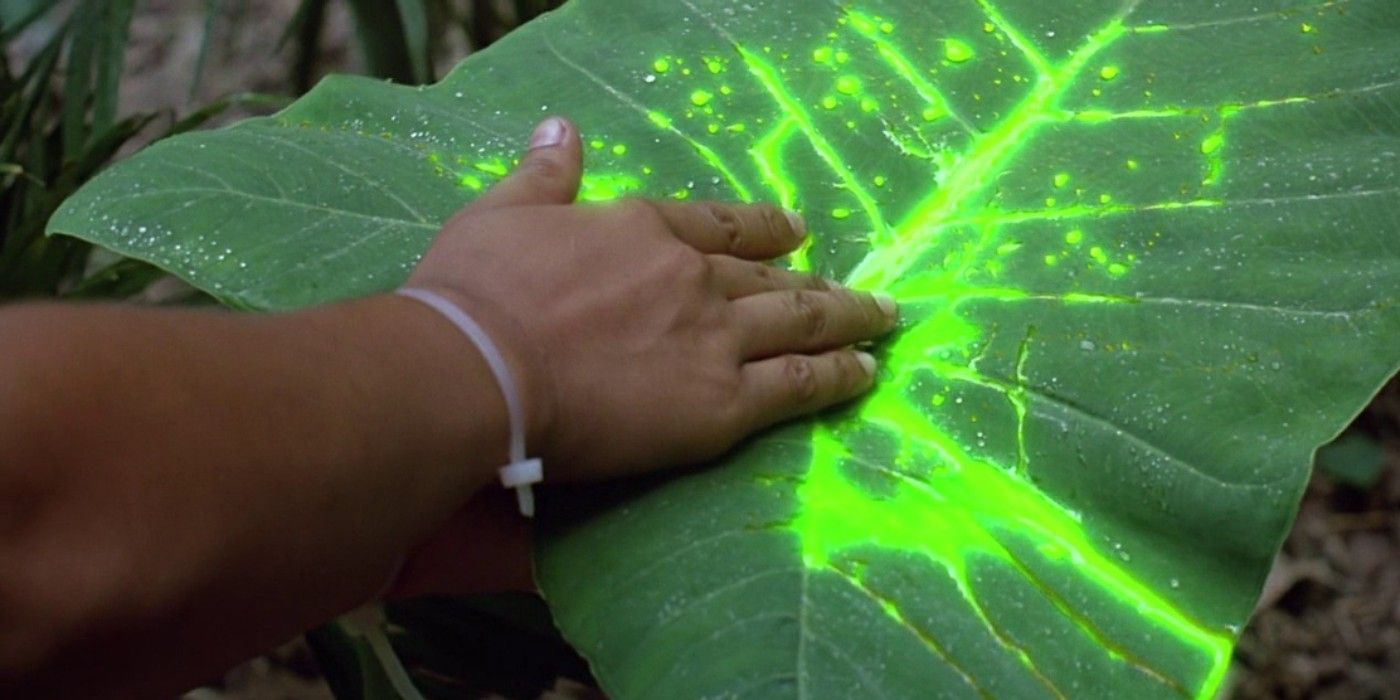In Prey, the Predator's blood plays a pivotal role, but audiences continue to wonder exactly why their blood is green. Director Dan Trachtenberg makes a bold and brave choice in setting Prey hundreds of years earlier than the other Predator movies. This boldness undoubtedly pays off and has effectively revitalized the Predator franchise after the disappointment of Shane Black’s The Predator.
Prey’s success can be traced to not only its visual distinctiveness, which derives from being set on the Great Plains in 1719, but also to its reimagining of a storytelling trick from 1987’s Predator and the intelligent use of callbacks to the earlier movies. The most obvious and crowd-pleasing example of the latter is arguably the repetition of a line made famous in Predator, “If it bleeds, we can kill it.” In both Predator and Prey, the "if it bleeds" line represents the first real belief that the Yautja can be tracked and killed due to the presence of its distinctive bioluminescent green blood.
SCREENRANT VIDEO OF THE DAY
These visual properties are important, although definitive explanations for them remain elusive. Nevertheless, a simple and sensible answer is to assume that the properties of the Yautja’s blood cause its green color. Evidently, it can be assumed that their blood doesn’t contain hemoglobin, which causes red pigmentation in human blood. Obviously, there are examples of animals on Earth that have green blood caused by the presence of chlorocruorin. However, given that Yautjas originate far away from Earth on Yautja Prime, it seems unlikely that the same oxygen-binding protein would be present in their blood.
The Unique Properties In Predator Blood

As Prey and the rest of the Predator movie series make clear, the distinctive properties in Predator blood are both an aid and a hindrance to them. The bioluminescence of their blood has assisted the humans they hunt. Admittedly, the difficulty for the likes of Dutch in Predator and Naru in Prey is being able to make them bleed in the first place. Initially, the Yautjas’ cloaking technology gives them a huge advantage over their human adversaries. However, this advantage is lost once their blood is spilled, as the fluorescent green makes them easier to track for the likes of Naru and Dutch. In that regard, a Predator's own blood can work against them, ultimately turning them from hunters into the hunted.
Surprisingly, Predator blood is more useful in their confrontations with Xenomorphs. Despite the events of 2018's The Predator, it remains unclear whether Alien vs Predator and Alien vs Predator: Requiem can be considered completely canon in the Predator movie series. Even so, these movies do illustrate a key property of Predator blood. Xenomorph blood, first seen in Alien, is a potent molecular acid with the ability to burn through human flesh and bone. However, this is not the case with Yautjas. Their blood can partially neutralize this acid, offering their flesh a degree of protection from the Xenomorph’s powerful defense mechanism.
Interestingly, not all Predator blood is the same. The so-called "Feral Predator" of Prey has darker and less luminous blood than other Yautjas. It has been suggested, though not confirmed, that this may be an evolutionary quirk due to the "Feral Predator," which also had a distinctive mask, evolving in a more desert-based environment than other Predators. Whatever the cause, the unique properties of Predators’ glowing green blood remain a distinctive and arresting image and a powerful element within the wider Predator mythos.
